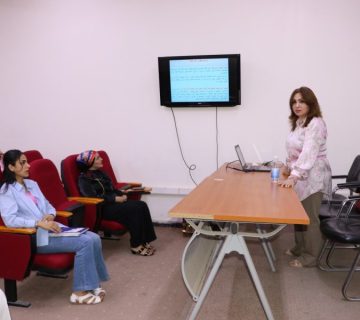The Department of Astronomy and Space, in cooperation with the Continuing Education Unit at the College of Science, held a lecture entitled “The Unified Model of Popping Galaxies” in the presence of a number of students, researchers, amateurs and specialists in physics and astronomy. The lecture aimed to identify galaxies, which are one of the largest celestial bodies in the universe, as well as being a gathering of stars, gases, soil and interstellar matter, in addition to being dark matter linked together by a huge force of attraction, as this force of attraction is located in the center of the galaxy as a supermassive black hole.
The lecture was presented by Dr. Yasser Ezzeddine Rashid, included a review of how to classify galaxies in terms of external form into three kinds: spiral, elliptical and irregular galaxies, indicating that the galaxies are either ordinary, for example, the Earth Galaxy Milky Way or active galaxies, pointing out that the latter is divided into four main types depending on their activity and the shape of their spectrum, stressing that all active galaxies are one type of galaxy depending on the extent to which the galaxy deviates from Line of Sight.










